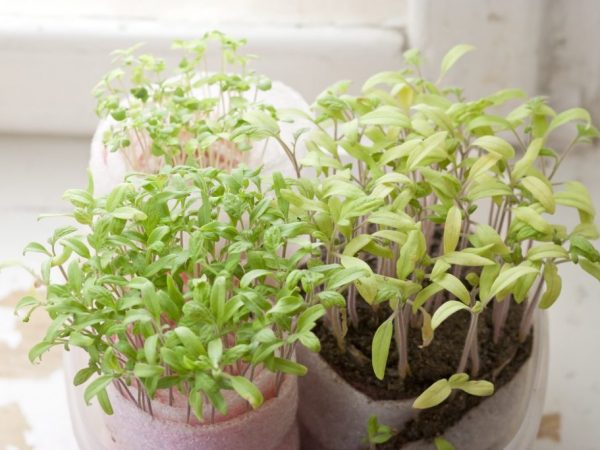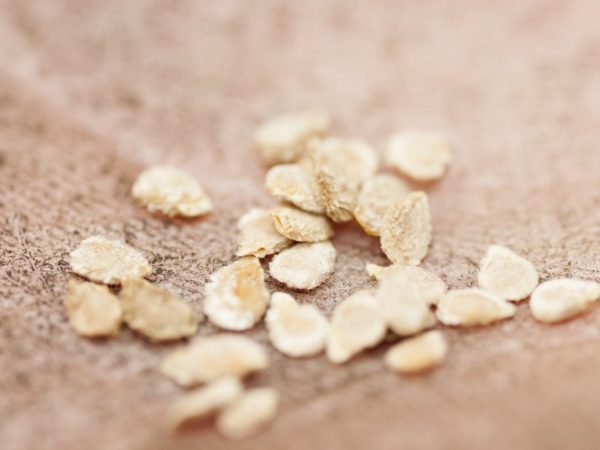Rules for planting tomatoes in a snail
When growing tomatoes, seedling boxes take up a lot of indoor space. This is quite inconvenient, especially when it comes to a small apartment. Planting tomatoes in a snail is a solution to many problems, an original and unique way to significantly reduce the capacity of containers.

Rules for planting tomatoes in a snail
Features of the method
Sowing tomatoes with a snail is quite an effective way. Tomatoes in a snail germinate faster than in a conventional container, while taking up less space. In order to sow grains in this way, you need to prepare the materials that you will use in the course of work.
To land you will need:
- any transparent container with low sides, it is in it that the structure will be put later;
- stand for laminate: the material should not allow water to pass through, it is desirable that it be soft and with a porous structure;
- you need a tape 12 cm wide, and the length must be at least 2.5 m;
- small tweezers;
- 2 elastic bands;
- package, best of all cellophane;
- Earth;
- plant grains.
Preparing for landing
Seed selection
Before planting tomatoes in a snail, it is necessary to sample the seeds. Planting material that looks bad, is small and has a different shade should not be planted.
Experts recommend also using other methods of selection, for example, pouring water over the seeds - you need to weed out those that surfaced.
Planting materials that have not gone through the preparation process will not be able to fully grow in a snail.
Seed preparation
There are a few rules to follow:
- Soak. In order for the planting of a tomato in a snail to be successful, it is necessary to soak the tomato seeds in water in advance. This procedure requires warm water, the material is wrapped in gauze or bandage, and left there until it swells completely. To harden the seeds, they can then be kept in cold water for 2-3 hours.
- Top dressing of seeds. To accelerate the germination of seeds 9-11 hours before planting, soak in water with microelements. This method is good because the seedlings will be much stronger and with excellent taste. As trace elements, use ultraviolet light and potassium permanganate. Place the seedlings in direct sunlight or an ultraviolet light. From potassium permanganate and water, it is necessary to prepare a 1.5% solution, and lower the material there for 25 minutes.
Disinfection

Seeds should be disinfected before planting.
The process of growing tomato seedlings with a snail can be facilitated if the shoots are disinfected. To do this, use garlic water: for 110 grams of water - 22 grams of chopped garlic. Experts recommend immersing the seeds in such a solution for 1 hour. Then you should rinse the seeds with clean water.
Seeds that are processed and prepared for planting grow much faster than untreated materials. Experts pay attention to the fact that 100% germination is observed in the treated seeds.
Snail landing
Sowing a tomato into a snail, first of all, is to organize a workplace.There must be enough space to carry out all possible manipulations. There should already be a container, earth, water, seeds and other necessary tools on the table.
- Tape 12 cm with one side (end) must be placed towards you, it is best that the end of the tape is on the tray.
- It is necessary to pour soil over the entire width of the tape, but not more than 1.5 cm. Experienced gardeners warn that the soil can crumble, so it is advised to tamp the earth a little with your palm. And slightly wet with water, so that later it is easier to place the seeds.
- When the tape is completely covered with earth, you can start placing the planting material. Use tweezers to properly and conveniently place seeds in the ground. Planting material is placed along the entire length of the tape and adheres to a distance of 2.5 cm, this is important for future tomatoes. Experts recommend making small indentations with your finger when planting.
- Then we slowly fold the tape in the form of a roll, do not press it strongly, but the roll should not fall apart. We turn to the place where the seeds have not yet been planted. Hold the finished roll with one hand and pour soil onto a new section of the belt and exactly, in this way, plant the seeds further.
- Using this method, we wrap the entire tape, holding it with one hand, so that the roll does not fall apart. Now such a system resembles a large roll or shell, it is from this that the name of the seedlings came from.
- The shell can crumble, so to prevent this from happening, you need to wrap the shell with an elastic band, but not very tightly, so as not to overtighten the layer of earth.
- We take a plastic container and set the roll in it so that the seedlings are closer to the top.
- In order for the shoots to grow, the structure must be thoroughly watered. Since the structure itself is not a dense structure, you can not spare water, since its excess will not play against the seeds.
- A transparent bag must be pulled over the entire structure, and secured on top with another elastic band. This is necessary in order to form the greenhouse effect and the shoots will then germinate much faster.
You can plant tomatoes for seedlings with a snail in about 20 minutes. It is important, after the first shoots appear, it is necessary to immediately remove the cellophane. It is best if the snail is on a windowsill, where there is enough light. Water the tomatoes in the snail constantly, the lack of water and moisture has a bad effect on the development and growth of seedlings. The main thing is to adhere to all the rules and schemes, and then in a month you will receive excellent seedlings for seedlings, which are suitable both for planting in greenhouse conditions and for open ground. Growing this way is a great way to get great tomatoes.


